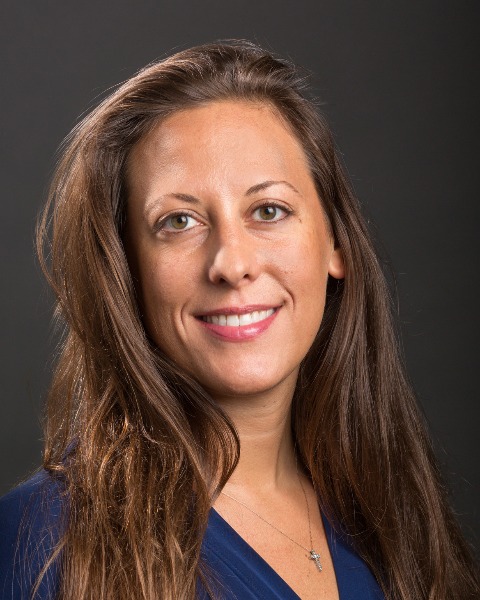Oral Abstract
Multi-echo bSSFP for human cardiac DMI on a clinical 3T MRI scanner
- JX
Jie Xiang
PhD student
Yale University - JX
Jie Xiang
PhD student
Yale University - Rd
Robin A. de Graaf, PhD
Professor
Yale - HD
Henk M. De Feyter, PhD
Associate Professor
Yale - MT
Monique A. Thomas, MSc
Research Associate
Yale 
Lauren A. Baldassarre, MD, FSCMR
Cardiology Director Cardiac MR/CT; Director of Cardio-Oncology Program and Advanced Fellowship; Vice Chief, Section of Cardiovascular Medicine, Faculty Life
Yale University School of Medicine- JK
Jennifer M. Kwan, MD, PhD
Cardio-Oncology/MRI/CT Attending Physician
Yale University School of Medicine .jpg)
Dana C. Peters, PhD, FSCMR
Professor of Radiology and Biomedical Imaging
Yale
Presenting Author(s)
Primary Author(s)
Co-Author(s)
Methods:
All experiments were implemented on a 3T Vida Siemens scanner, using a 16cm-diameter 2H loop coil. We used a multi-echo bSSFP sequence and IDEAL (8) for DMI reconstruction. B1 was calibrated in phantoms to determine the (spatially varying) B1 voltages needed to achieve a 90-degree flip using a specified RF pulse. The feasibility of experimental setting and algorithms at 3T was first tested on 3 small bottles containing deuterated water, glucose and DMSO respectively. Images and SNR were compared to multi-echo GRE. bSSFP and IDEAL simulations were used (9,10) to decide appropriate ∆TE and center frequency. The expected metabolites at natural abundance were deuterated water at 4.8ppm, lipid at 1.3ppm. For contrast studies, glucose at 3.7ppm with possibility of glutamate at 2.5ppm. Scan parameters were TR/∆TE/θ= 33ms/6.2ms/60°. Spatial resolution (~15.6x15.6x17mm), averages (~500) and scan time (~10min) were varied according to the situation.
Healthy subjects: All five volunteers (3 with deuterated contrast) provided written informed consent for this IRB approved study. In vivo short-axis DMI was performed for natural abundance deuterium, and after drinking 0.75g/kg of deuterated glucose. MRSI of similar spatial resolution and scan time was compared. The coil location was optimized for proximity to the heart. DMI acquisitions along with Cines and B0-maps in matched slices were obtained, after shimming.
Results: Multi-echo bSSFP succeeded in separating the 3 target species after B0 correction, and demonstrated much higher SNR vs. multi-echo GRE (Figure 1). Figure 2a-c show the results of B1 calibration, with spatially varying voltages required, and line-profile of coil-sensitivity. Figure 2d suggested ∆TE ~= 6ms has effective NSA of 3.5 (83% of optimal SNR) for water and glucose. Using center-frequency on water provided high signal for glucose and lipid (Figure 2e). In the in vivo experiments without contrast, lipid and water were successfully distinguished. Though mostly overlaid with chest wall fat, lipid was also noticeable in epicardial fat (arrow in Figure 3a). Figure 3b shows DMI in a subject who ingested deuterated glucose, at 3 different time-points. Lipid was consistent in time, while glucose in both heart and stomach continuously decreased (Figure 3c). MRSI generally agreed with our method but failed to capture lipid (Figure 3d).
Conclusion: We proposed a method for human cardiac DMI using multi-echo bSSFP at clinical field strength, and demonstrated its feasibility at both natural abundance and after deuterated glucose injection.
Figure 1. Phantom test at 3T. Three concentrated bottles with deuterated water (4.8ppm), glucose (3.7ppm) and DMSO (2.5ppm) respectively were imaged near the center of the 2H loop coil. (a) Raw images of multi-echo bSSFP and GRE. (b) B0 field map using 2-echo GRE. (c) Swaps may exist in species isolation and these are minimized with B0 map correction. (d) Multi-echo GRE with similar scan parameters showed lower SNR in all species..png)
Figure 2. Coil calibration and simulations. (a) Spatial map of required B1 voltages to achieve a 90° RF excitation (for our 2ms Gaussian RF) by acquiring images at multiple voltages. At 8cm 120V provides a 90° flip angle. (b) Coil used for our experiments. (c) Based on this, coil sensitivity maps were obtained, with inset showing signal vs. distance. We also investigated the ideal (d) echo-spacing for optimized SNR and (e) center-frequency to avoid banding for three target species in the in vivo experiments..png)
Figure 3. In vivo DMI. (a) A 9min DMI with natural abundance. The heart is about 11cm from the coil. The B0 map showed reasonable homogeneity. A raw image displays the SNR and spatial resolution achieved. The color overlays clearly show water isolated from lipid, including subcutaneous and epicardial fat well localized (arrow). Water signal was higher in the RV and LV blood pool, potentially due to inflow. (b) DMI in a subject after oral intake of glucose. Glucose was very evident in the stomach, and in the heart. (c) Cardiac glucose concentration decreased slightly in the 1.5h after drinking deuterated glucose, except in the stomach where it decreased quickly. Deuterated water signal increased then gradually decreased. Lipid concentration showed least changes across time. (d) MRSI (at 53-63 minutes) overlaid with the raw multi-echo bSSFP images acquired. Spectroscopy of three typical pixels are shown on the right: pixels containing 1) chest-wall; 2) myocardium, and 3) stomach. MRSI was not sensitive to lipids, but well separated the water and glucose peaks in pixel 2. The concentrated glucose in the stomach was observed..png)

